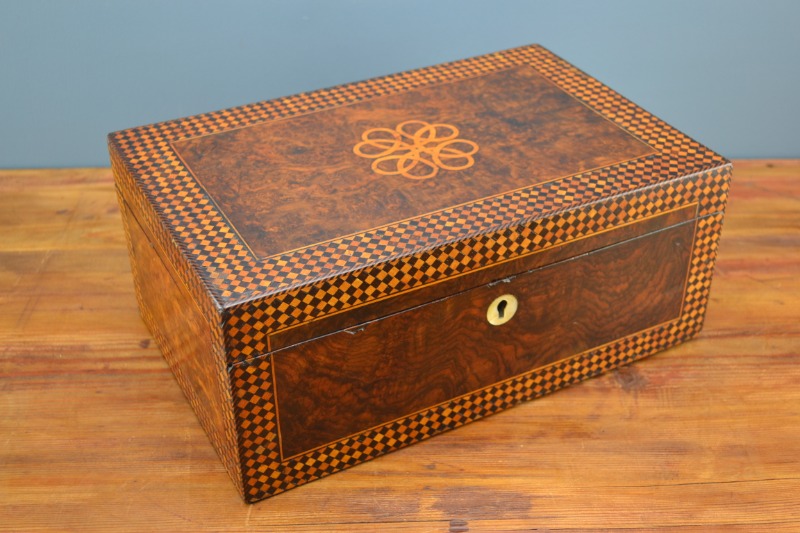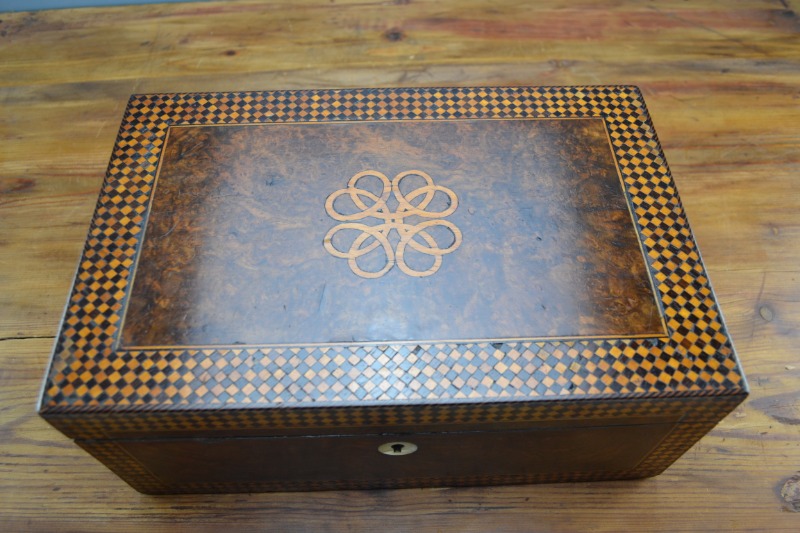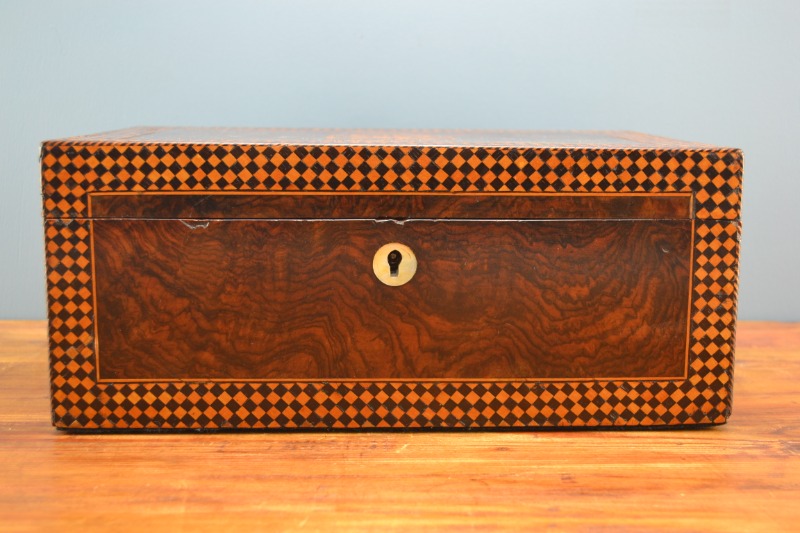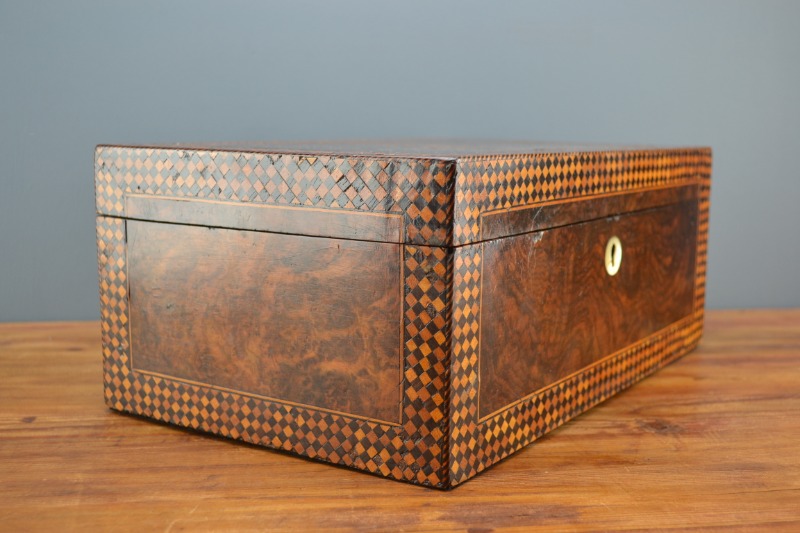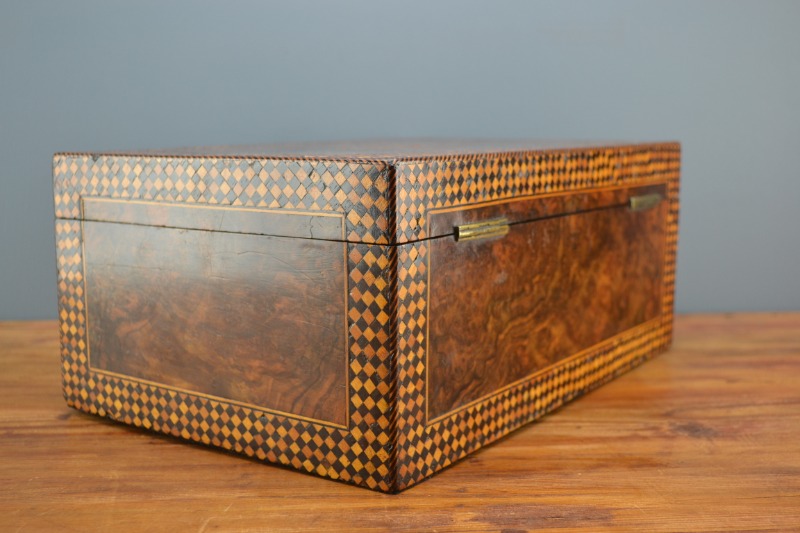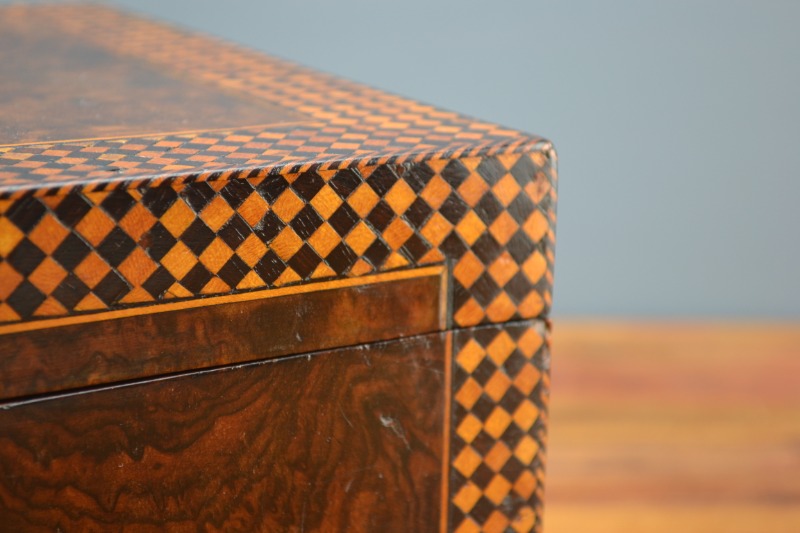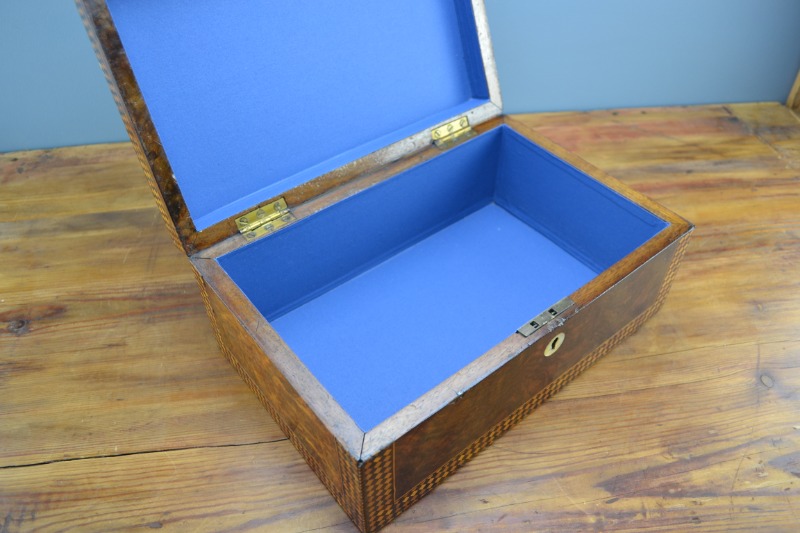Early 19th Century Bur Walnut Box with Hand Cut Chequered Tunbridge Ware Style Inlay Banding
Age:
Early 19th Century, Circa 1820 - 1840
Material:
Bur Walnut
Dimensions:
43cm x 21.5cm x 14cm
Shipping:
Standard Parcel
Price:
SOLD
Bur walnut box with hand cut chequered Tunbridge Ware style inlay. Ebony and boxwood stringing plus rope pattern to edge. Mother of pearl escutcheon. Early 19th Century. No key.
Very attractive box with bur walnut panels surrounded by simple Tunbridge ware design.
Great age worn colour on the outside with nice clean blue bukram covered interior. Lovely to look at and practical to use.
Tunbridge ware is a form of decoratively inlaid woodwork, typically in the form of boxes, that is characteristic of Tonbridge and the spa town of Royal Tunbridge Wells in Kent in the 18th and 19th centuries. The decoration typically consists of a mosaic of many very small pieces of different coloured woods that form a pictorial vignette. Shaped rods and slivers of wood were first carefully glued together, then cut into many thin slices of identical pictorial veneer with a fine saw. Elaborately striped and feathered bandings for framing were pre-formed in a similar fashion.

